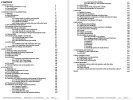Gerard
Registered
Hello,
Me and my friend Rainer just finished after 3 years a 350 page book about our gardenrails in Dutch.
Based on this book i am now in the process of translating the book into the English language.
I just finished my first translation into English language and now i am looking for help from one or more native English speakers
with the know-how of the language but also especially the knowledge of model trains related English expressions.
It is a lot of text so I suggest that I provide a limited number of pages to anyone who is willing to help me.
If you can help me please send me a mail at glm@vanderschrieck.nl and i will send you a number of pages.
Gerard van der Schrieck
Me and my friend Rainer just finished after 3 years a 350 page book about our gardenrails in Dutch.
Based on this book i am now in the process of translating the book into the English language.
I just finished my first translation into English language and now i am looking for help from one or more native English speakers
with the know-how of the language but also especially the knowledge of model trains related English expressions.
It is a lot of text so I suggest that I provide a limited number of pages to anyone who is willing to help me.
If you can help me please send me a mail at glm@vanderschrieck.nl and i will send you a number of pages.
Gerard van der Schrieck

